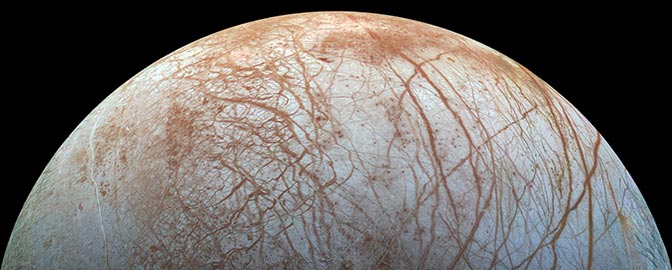NASA's budget is set by an annual process that begins with a proposal from the White House and ends with legislation passed by Congress and signed by the President. The budget specifies funding amounts for programs and projects in human spaceflight, space science, aeronautics, technology development, and education.
NASA's budget peaked during the Apollo program in the 1960s. After the United States won the race to the Moon, space exploration lost political support, and NASA's budget was cut significantly. Since the 1970s, NASA has accounted for, on average, 0.71% of annual U.S. government spending. Since the 2010s, that value has been between 0.4% and 0.3%.

Chart of NASA's annual congressional appropriations since its inception, adjusted for inflation.
Download OptionsThe Planetary Society condemns deep, damaging 24% cut to NASA’s budget
The Planetary Society strongly opposes the President’s Fiscal Year 2026 budget blueprint, which proposes a 24% reduction to NASA’s top-line funding. This proposed cut would represent a historic step backward for American leadership in space science, exploration, and innovation.
NASA Budget Breakdown
NASA is internally divided into major program areas, each of which receives funding to manage its own projects. Funding varies year-to-year, but generally about 50% of NASA's annual budget is spent on human spaceflight activities, 30% on robotic missions and scientific research, with the remainder split between aeronautics, technology development programs, staff salaries, facilities management, and other overhead.

* Not pictured, STEM Outreach & Education, which is less than 1% of NASA's annual funding
Download OptionsNone of NASA's budget is used for national defense or intelligence gathering programs; it is a civilian agency responsible for the peaceful exploration of space. National security space programs are the responsibility of other agencies, most notably the Space Force.
How NASA's Budget Is Made
The White House provides a detailed budget proposal to Congress every February, which kicks off an annual legislative process known as appropriations.
The proposal that begins this process is called the President's Budget Request or PBR, which itself is the outcome of year-long negotiations, first within NASA and then between NASA and the White House's budget office. The President's Budget Request includes a justification and explanation for all of the space agency's activities. It often makes proposals to cancel some projects and to begin new ones. The priorities reflected in the budget request reflect those of the President, and the document can just as easily be read as a political statement by the executive branch.
The President's Budget Request does not carry the force of law, though it does set the terms of the debate for funding legislation subsequently written by Congress. Historically, Congress has never increased funding for NASA by more than 9%, nor cut it by more than 11%, relative to the request (with the unique aftermath of the Challenger disaster being the one exception).

The President's budget request for NASA is strongly correlated with final congressional appropriations. On average, Congress appropriates about 2% less than what the White House requests for the space agency. It has never increased funding by more than 9%, nor cut it by more than 11%, relative to the proposal. The one outlier is in the aftermath of the Challenger disaster, which occurred after the budget request had been prepared. Congress provided NASA with an up-front allocation to build a new Shuttle orbiter, accounting for the apparent spike in funding in FY 1987. Values are in real-year dollars (not adjusted for inflation).
Download OptionsOnce the White House sends its budget proposal to Congress, key congressional committees in the Senate and the House of Representatives craft legislation to fund NASA. Through this process, Congress decides whether to accept or reject proposals contained in the President's Budget Request and whether congressional funding levels for NASA's programs and initiatives will match, exceed, or fall short of the levels proposed by the President.
NASA's Budget (part 1) The President's Budget Request kicks off the yearly budget season in United States. It takes a year to put together, and Congress plays no part. Why is that?
The legislation must be passed by Congress and signed by the President before the start of the fiscal year on 1 October. If not, NASA loses its authority to spend money and cannot honor contractual obligations, provide paychecks, or otherwise function.
How NASA's Budget Is Made (part 2) Once the President's Budget Request is finished, there are still several more steps before the budget is complete. Here we take you through the second part of the budgeting process and explain why it's so important to follow in order to help NASA get the most money it can every year.
Note: Lessons 3 - 5 of The Planetary Society's free online course, Space Advocacy 101, explore this topic at greater depth.
NASA's Budget, Compared
The majority of spending by the United States government pays for social welfare programs and is not subject to annual congressional approval. This spending is referred to as "mandatory". Less than 30% of all U.S. government spending requires approval every year by Congress—a category of spending referred to as "discretionary". The Defense Department and related activities account for roughly half of all discretionary spending. All other government agencies and activities—including NASA—are funded from the remaining amount.
In 2024, NASA accounted for approximately 0.37% of U.S. spending.

Another way of thinking about NASA's piece of federal spending is to consider how many "NASAs" are expended annually, from a budgetary standpoint. NASA's budget was roughly $25 billion in 2024. Given that the U.S. spent $6.8 trillion in that same time period, that's equivalent to spending on 272 "NASAs" overall.

Each block in this chart represents one NASA's-worth of expenditures by the United States: $25 billion. In 2024, the federal government spent $6.8 trillion—equal to 272 NASAs.
Download OptionsWhere NASA's Budget Is Spent
NASA spends its money on Earth, not in space. NASA employs about 17,000 people and supports the employment of tens of thousands more through contracts and grants made in every state of the union. Last year, NASA spent 73.5% of its total budget on contracts with nearly 5,000 businesses, nonprofit organizations, and educational institutions across the United States. NASA's major contractors—Boeing, Lockheed-Martin, SpaceX, and Orbital Sciences—are the biggest recipients of NASA funding, though they in turn work with many additional suppliers and businesses.
| State | Obligated Amount | Rank |
|---|---|---|
| California | $5.37 billion | 1 |
| Maryland | $2.40 billion | 2 |
| Alabama | $1.84 billion | 3 |
| Texas | $1.46 billion | 4 |
| Virginia | $1.43 billion | 5 |
| Florida | $1.38 billion | 6 |
| Colorado | $904 million | 7 |
| Washington | $498 million | 8 |
| Mississippi | $238 million | 9 |
| Ohio | $214 million | 10 |
The top 10 states by NASA contracted spending obligations in FY 2023. See the full list, including prior fiscal years, in this Google Spreadsheet. Source: NASA Procurement Data View/Casey Dreier.
Benefits of NASA
According to a report by The Tauri Group, NASA provides broad social and economic benefits to the United States. In particular, NASA:
- Supports technology development and skilled manufacturing, creating positive ripples throughout the economy, larger than other federal agencies on average.
- Spurs innovation and business growth.
- Advances space-related industries and has made contributions that directly impact people every day: including the first weather satellites, telecommunications, remote sensing, and GPS technologies.
- Promotes international collaboration and supports peaceful foreign policy.
- Inspires people around the world; it is one of the best "brands" of the United States.
- Motivates and inspires people to pursue science, technology, engineering, and mathematics (STEM) fields.

To cite this web page:
Dreier, Casey. <YEAR>. Your guide to NASA’s budget. The Planetary Society. https://www.planetary.org/space-policy/nasa-budget
To cite the data:
Dreier, Casey. <YEAR>. Historical NASA budget data [Dataset]. The Planetary Society. https://docs.google.com/spreadsheets/d/e/2PACX-1vTU9FhDV4U6X4suHtvoiMLYDN-y56ipoGh-N7n9fNq7BW1PiMsx5fVlj10LsgvTYVbu3CiUDO_WD0We/pubhtml
Data tables are updated with the release of each Presidential budget justification. Use the prior fiscal year as the <YEAR> in your citation.
For questions, corrections, or other inquiries, contact [email protected]


 Explore Worlds
Explore Worlds Find Life
Find Life Defend Earth
Defend Earth


